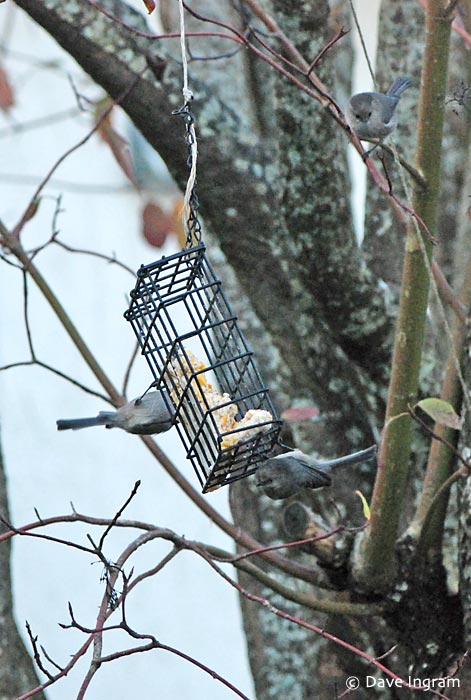Mark November 14th on your calendars and think about signing up for Project FeederWatch. If you’ve got a yard and a bird feeder you can collect valuable data about birds in your area. As a bonus, it is fun getting to know your regulars.
This will be my first winter counting birds that visit our feeder. I’ve done Coastal Waterbird Surveys in the past but with two young children found it difficult to get out to the site and complete the survey. This will be much easier and I can enjoy a nice cup of organic, fair trade, bird friendly coffee while doing it!
What is Project FeederWatch?
Project FeederWatch is operated by the Cornell Lab of Ornithology and Bird Studies Canada. There is a nominal fee to participate. However, depending on what country you’re in you’ll either get Cornell’s BirdScope newsletter (US) or BirdWatch Canada magazine (Canada). In addition, you receive a research kit that helps you start the project.
I’m hoping that our feeders will be productive. Yesterday we had a flock of Bushtits, a pair of Mourning Doves (perched on our rooftop), several Song Sparrows, White-crowned Sparrows, Spotted Towhee, American Goldfinch, House Finch, Chestnut-backed Chickadees, and a female Downy Woodpecker (compare the photograph with the male Downy Woodpecker on our elderberry last week).
I admit that these images aren’t perfect – the light was poor and I had to increase the ISO to 800 so they’re a little grainy. Plus I’m realizing how limiting my existing lens set up is for bird photography. I was able to get fairly close to the Downy but had to crop the Bushtit images quite a bit. Might be time to start thinking of an appropriate Christmas Bird Count present!



